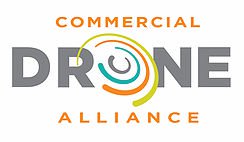 Drone safety is a important subject within the industrial drone trade. As FAA Reauthorization packages come up for dialogue in Congress this month, the Commercial Drone Alliance has printed their instructed tips for drone safety laws.
Drone safety is a important subject within the industrial drone trade. As FAA Reauthorization packages come up for dialogue in Congress this month, the Commercial Drone Alliance has printed their instructed tips for drone safety laws.
The Commercial Drone Alliance is a non-profit trade group centered on training and advocacy. Co-directed by trade leaders Gretchen West and Lisa Ellman of Hogan Lovells, members embody giant enterprise gamers like Project Wing (X, a part of the Google household,) CNN/Time Warner and Ford Motor Company.
The paper provides an intensive overview of the problems concerned in drone safety. Drone safety has the potential to considerably affect each drone operator, from leisure to small industrial pilots and enormous enterprise clients: stakeholders agree that cautious laws is important to drone trade progress. The Alliance’s printed solutions are the results of the group’s just lately hosted Domestic Drone Security summit, which introduced policymakers and trade collectively to collaborate and construct understanding between stakeholders.
The assertion begins by saying that whereas the drone market is increasing quickly, “the policymaking around drone use has lagged behind technology.”
The paper’s main factors counsel:
- Any Drone Security Legislation Must be Narrowly Tailored. The Alliance factors out that regulation that’s too broad is doubtlessly limiting. “It should enable law enforcement to mitigate or confront drone threats but avoid unintended consequences that may restrict innovation, adversely affect authorized commercial drone flights, threaten privacy, civil rights, or civil liberties, or otherwise cause harm,” says the Alliance.
- Enable Technology Solutions to Policy Problems: “We should seek to implement UTM [Unmanned Traffic Management] in a timely manner, and the federal government must adopt further enabling regulations with UTM in mind. Moreover, as noted above, the federal government must diligently work to legally enable counter-drone technology solutions in an appropriately tailored way, which will necessitate changes in law and policy.”
- Require Hobbyists to Register Their Drones. Despite the latest ruling that FAA drone registration was illegal, the Commercial Drone Alliance means that or not it’s reinstated to permit for training of recent operators.
- Establishment of Remote UAS ID and Tracking Requirement. “The Alliance believes that establishing a comprehensive remote UAS identification and tracking system is a critical step to enable the ongoing and timely expansion of authorized commercial drone operations,” says the assertion. “A Remote UAS ID and Tracking system is a common-sense step forward…” Remote monitoring is an enormous subject, and the paper outlines a framework: together with a capability-based tiered strategy, a “limited carve-out” for hobbyists and mannequin plane to make sure that leisure flyers will not be required to adjust to the identical degree of necessities as industrial pilots, and shared responsiblity for drone operators and drone producers.
- Flexible Implementation: “Any new rule should be based on performance-based standards, rather than prescriptive regulatory mandates…the Alliance supports a technology-neutral and interoperable approach compatible with any number of broadcast, network, software, or ADS-B systems.”
- Data Privacy and Government. “While it is critical that law enforcement has access to data when necessary, it is also critical that this authority remains appropriately tailored…,” says the Alliance.
- Trusted Operator System. “It is very important that authorized commercial operators have the opportunity to proactively gain the trust of public officials and the general public. Any new rule should include a trusted operator system similar in concept to the TSA Pre✓system where safe and responsible operators can voluntarily provide additional details about their organization and UAS operations to be vetted and evaluated.”
Proposals coping with drone safety points have generally threatened to put vital administrative burden on industrial operators, and opinions differ on the very best methods to legislate. Every stakeholder within the trade ought to perceive the problems: for extra info on the paper, see commercialdronealliance.org.
 Unmanned Aerial Vehicle The latest drone news
Unmanned Aerial Vehicle The latest drone news



